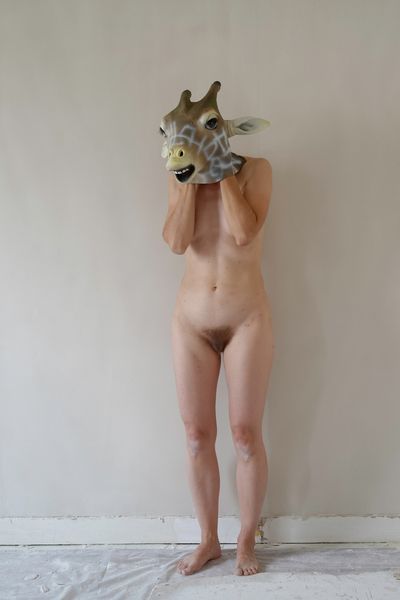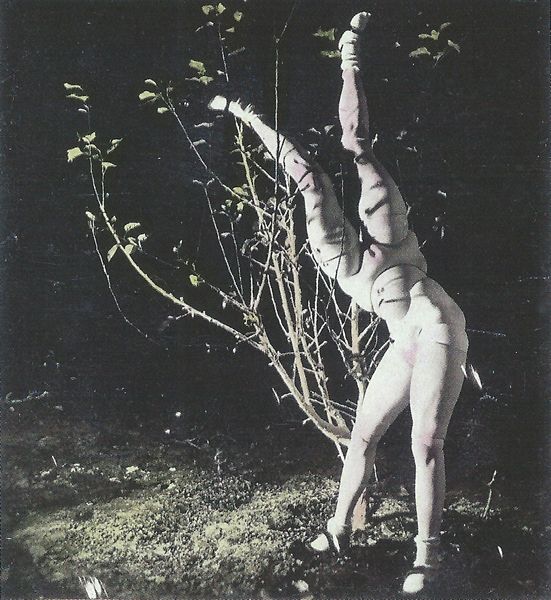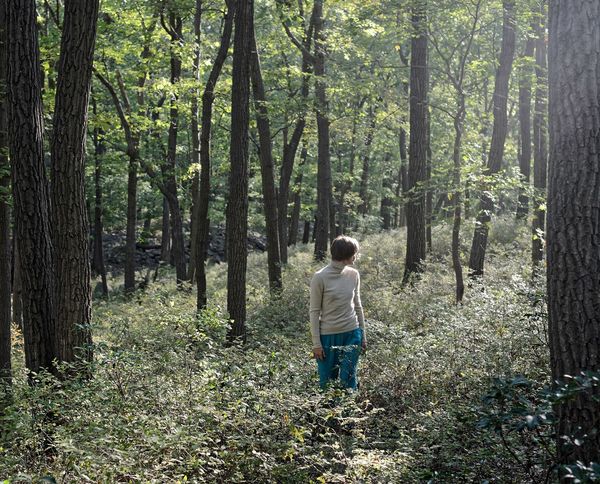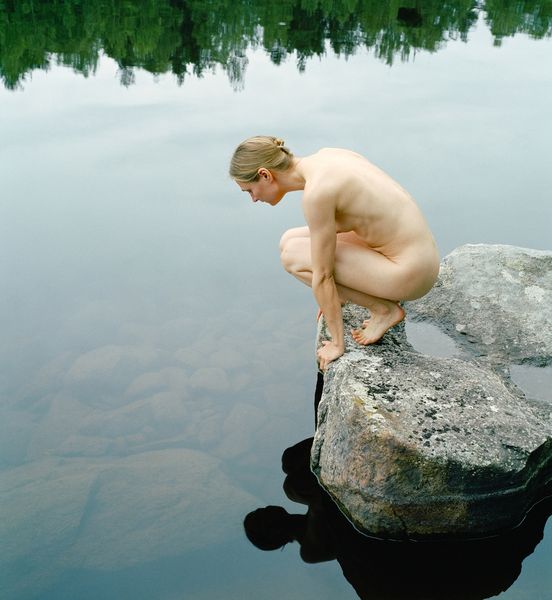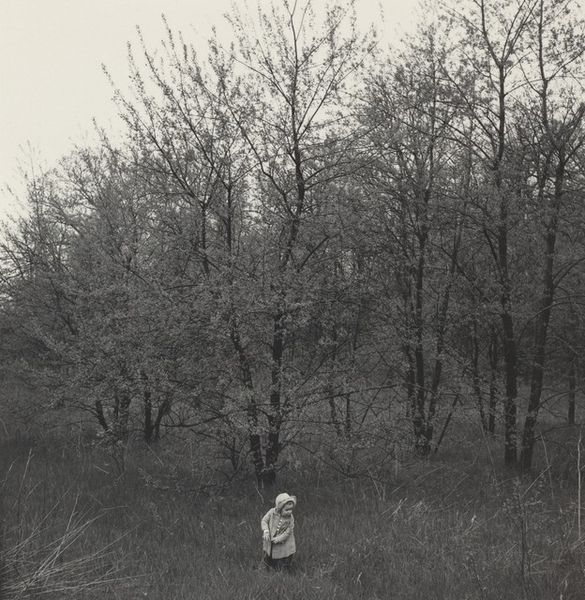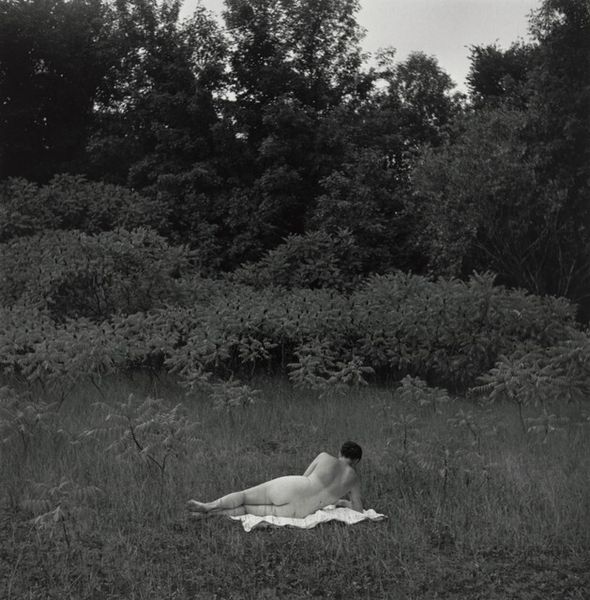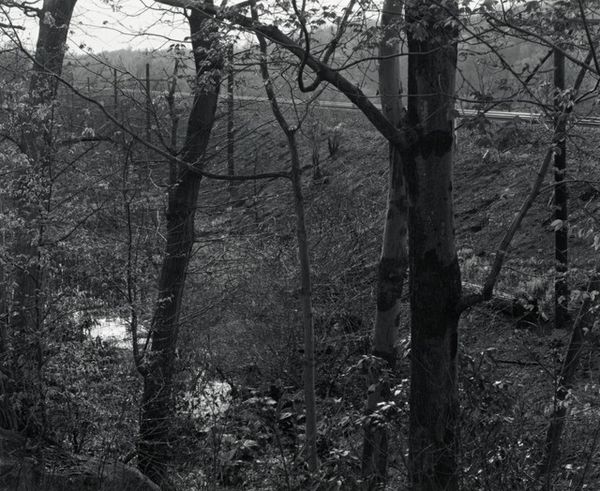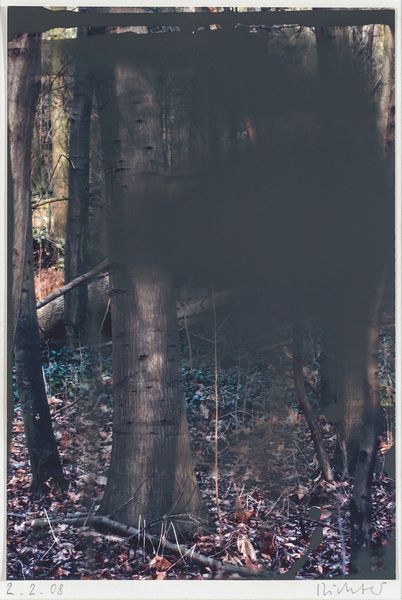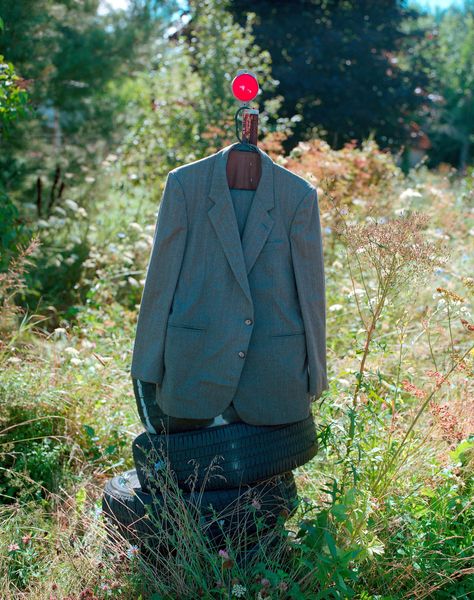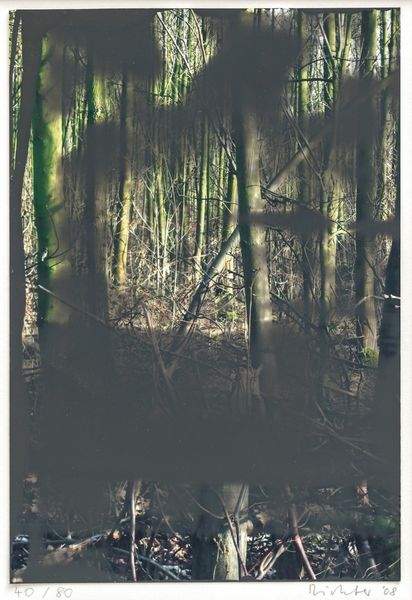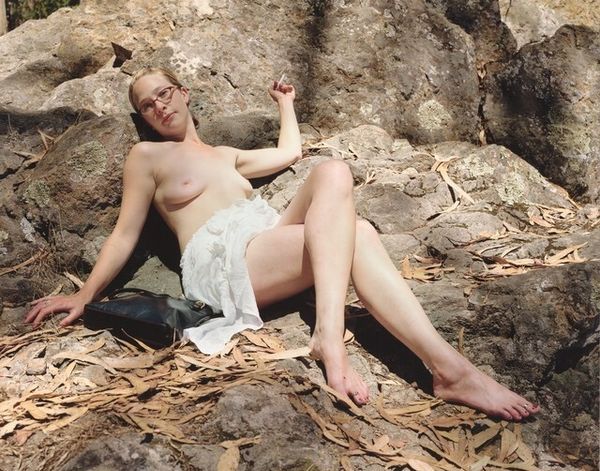
Copyright: All content © Elina Brotherus 2018
Curator: This photograph, taken in 2016, is titled "Becoming a Tree" and it's the work of Elina Brotherus. I'm struck immediately by how Brotherus is trying to portray the connection between the human form and the natural world. Editor: My initial impression is one of quietude. The pale palette and the slender verticals of the trees create a visually rhythmic and calming composition. There's a fascinating interplay of light and shadow. Curator: Absolutely, the formal composition invites contemplation, but I find myself reflecting on the implications of situating the body, particularly a nude form, within a forest setting. It’s an active commentary on our fraught relationship with nature. Considering eco-feminist theory, one could argue that it challenges patriarchal narratives. Editor: Interesting. From my point of view, the subdued color scheme enhances the tactile qualities. The texture of the bark contrasts beautifully with the smooth skin, almost mimicking the way light reflects and absorbs across those disparate surfaces. I find that there are some exciting material interactions there. Curator: Indeed. Beyond the immediate visual experience, this performance captured in a still image pushes us to analyze identity politics as performance in itself. Brotherus addresses how we shape our identities according to and against pre-established contexts. Gender, for example. Here, a naked body becomes not sensual, but intentional. Editor: I agree. And what seems like a raw depiction becomes a calculated gesture. See how the angle of the photograph manipulates spatial awareness. Curator: I also wonder about her perspective. She has stated a wish to move on from traditional portrayals of women in art to represent human figures who exist in space and time beyond restrictive cultural scripts. Editor: It encourages the viewer to decode these arrangements, it invites speculation about form and its interplay with negative space, the way the forest envelops the figure while simultaneously creating lines of separation. I like that ambiguous tension. Curator: Yes, seeing "Becoming a Tree" nudges us to acknowledge nature and to challenge how social roles play out between us. Art's real power exists there, for me, to foster important and, at times, very much needed, dialogue. Editor: I see in it the essence of a successful formal arrangement and through that, an image which creates intrigue and satisfaction by how each plane interacts with the other. It's been very interesting discussing that.
Comments
No comments
Be the first to comment and join the conversation on the ultimate creative platform.
